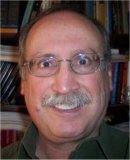|
Plenary
Lecture
Turbulence and Quantum Mechanics from Cosmic to Planck
Scales

Professor Siavash H. Sohrab
Robert McCormick School of Engineering and Applied
Science
Department of Mechanical Engineering
Northwestern University, Evanston, Illinois 60208
USA
E-mail:
s-sohrab@northwestern.edu
Abstract: A scale invariant model of statistical
mechanics was recently applied to describe a modified
statistical theory of turbulence and its quantum
mechanical foundation. In the present study the
implications of the results to a unified statistical
theory of fields with applications to diverse physical
systems in the fields of galacto-dynamics (cosmology),
hydrodynamics, molecular-dynamics, electrodynamics, and
quantum optics (dry-hydrodynamics) will be discussed.
The comparisons between the predictions of the model and
some of the available experimental observations over the
entire range of spatial scales from cosmic to Planck
will be examined. The connection between the
cosmological constant and the vacuum energy and the
concept of negative pressure will be discussed. In the
field of optics, the implications of the important and
central question: "Must the photon mass be zero?" asked
by Bass and Schrodinger [Proc. Royal Soc. A 232, pp: 1-6
(1955)] will be further examined. Also, the implications
of the invariant model of statistical mechanics to the
classical theory of electrodynamics of Maxwell and
Lorentz will be explored when the compressible nature of
physical space, in accordance with Planck's compressible
ether, is taken into account. In particular, the
existence of longitudinal electromagnetic waves,
L-waves, and their impact on the gravitational mass of
photon will be discussed. Finally, the physical and
quantum nature of time will be described and a
scale-invariant definition of time will be presented and
its physical significance to various systems as well as
its relativistic behavior will be addressed.
Brief Biography of the Speaker:
Siavash H. Sohrab received his PhD in Engineering
Physics in 1981 from University of California, San
Diego, his MS degree in Mechanical Engineering from San
Jose State University in 1975, and his BS degree in
Mechanical Engineering from the University of
California, Davis in 1973. He then joined Northwestern
University in 1982 as postdoctoral research assistant
and became Visiting Assistant Professor in 1983,
Assistant Professor of Mechanical Engineering in 1984,
and since 1990 he is Associate Professor of Mechanical
Engineering at the Northwestern University. From
1975-1978 he worked as a scientist doing research on
fire protection and turbulent combustion at NASA Ames
research center in California. His research interests
have been on combustion, fluid dynamics, thermodynamics,
and statistical and quantum mechanics.
|
